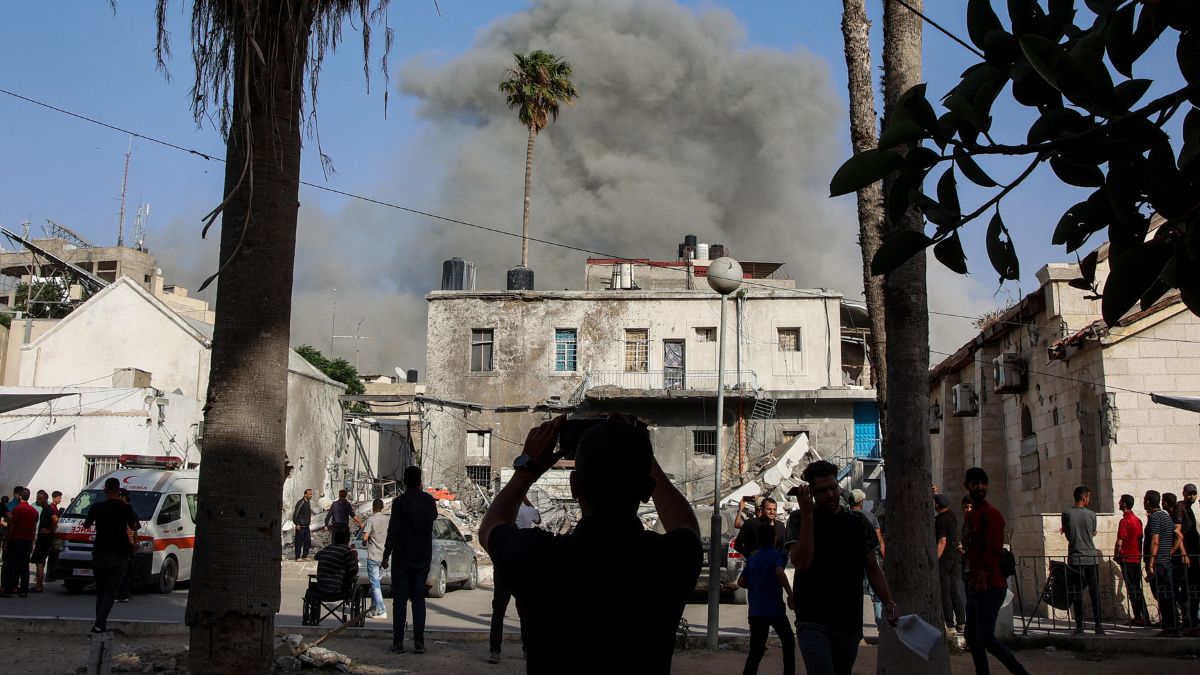The latest round of Gaza ceasefire talks between Israel and Hamas resumed and shortly ended without a breakthrough, a Palestinian official familiar with the negotiation confirmed. The official told the BBC that the session lasted for nearly three and a half hours and took place at two separate buildings in Doha.
Both the Israeli and Hamas side shared their message and clarifications through Qatari and Egyptian mediators. However, no progress was achieved during the negotiation phase. It is pertinent to note that talks were held at a time when Israel’s Prime Minister Benjamin Netanyahu is heading to Washington, DC to meet US President Donald Trump. The Gaza ceasefire is most likely to be a topic of discussion between the two leaders.
Meanwhile, the Palestinian official noted that the second round of talks is expected to resume on Monday as mediators plan to hold separate meetings with each delegation to overcome obstacles and narrow the gaps between the two sides.
The prologue to the talks
On Sunday, Israel dispatched a negotiating team to Qatar for indirect talks with Hamas focused on a ceasefire and hostage release deal. Hamas, in turn, proposed three key amendments to the US- and Israel-backed ceasefire framework. This included:
Continuation of talks until a permanent ceasefire is reached.
Full presumption of humanitarian aid via UN-backed agencies.
Israel’s withdrawal to the pre-March ceasefire position.
In response to this, Israel’s Prime Minister’s Office declared these Hamas demands “unacceptable” but proceeded with the delegation’s departure. The current US and Israel-backed ceasefire proposal includes a 60-day ceasefire, staged release of hostages (10 live and 18 deceased), and increased humanitarian aid.
Israel has been adamant about a phased approach without guarantees of a permanent truce, wary of Hamas maintaining control over Gaza. Meanwhile, Israel’s PM is also facing domestic pressure from his far-right allies as he heads to the US. Several Israeli far-right politicians have been opposing the ceasefire, something they did before as well.
How the recent talks went down
While speaking to Reuters, two other Palestinian officials noted that the Israeli delegation was not “sufficiently authorised” to reach an agreement with Hamas because it had “no real powers”. Netanyahu, on the other hand, thinks his meeting with Trump should help progress efforts to reach a deal for the release of more hostages and a ceasefire in Gaza.
The Qatari and Egyptian officials noted that for now, Hamas still seems to be holding out for essentially the same conditions it has previously insisted on - including a guarantee of an end to all hostilities at the end of any truce and the withdrawal of Israeli troops. However, the Israeli delegation outrightly rejected the amendments during the talks.
Impact Shorts
More ShortsWhile speaking to the reporters before heading to the US, Netanyahu made his stance on the matter extremely clear. “The release and return of all the hostages, the living and the fallen; the destruction of Hamas’s capabilities - to kick it out of there, and to ensure that Gaza will no longer constitute a threat to Israel,” the Israeli premier averred.
Things became more complicated as Israel resumed its offensive against Hamas with great intensity. They imposed an eleven-week blockade on aid entering Gaza, which was partially lifted several weeks ago. Just in the past 24 hours, the Israeli military said that it has struck 130 Hamas targets and killed several militants. The Israeli government argued that these measures are aimed at further weakening Hamas and forcing it to negotiate and free the hostages.
Overall, the question now is not only whether the talks in Qatar can achieve their goals, but also whether Trump can persuade Netanyahu that the war must come to an end at their meeting on Monday.


)

)
)
)
)
)
)
)
)



